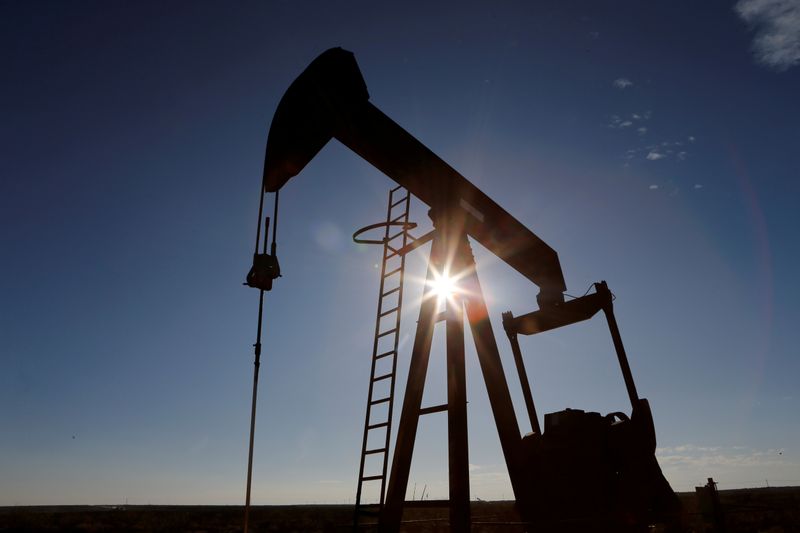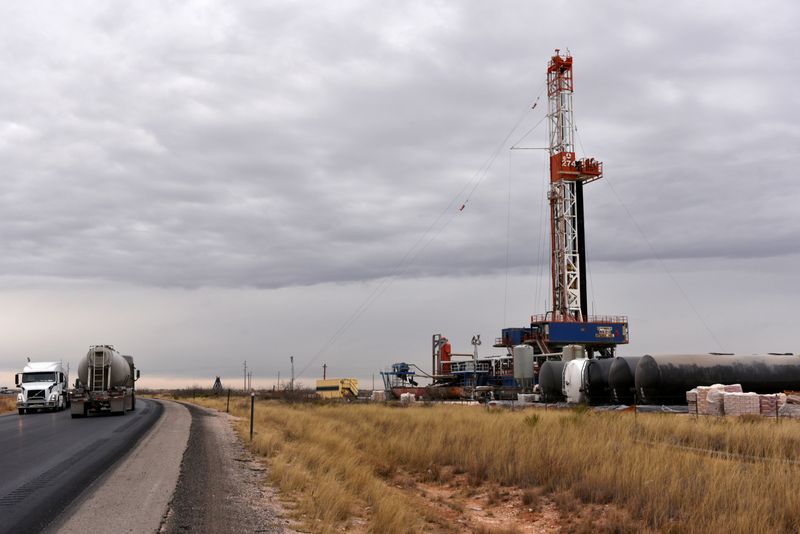HOUSTON/DENVER (Reuters) – Texas oilman Mike Shellman has kept his MCA Petroleum Corp going for four decades, drilling wells through booms and busts and always selling his crude to U.S. oil refiners.
But now the second-generation oilman has abandoned drilling any new wells this year and postponed some maintenance amid a sharp drop in global oil prices and brimming storage tanks. He is considering shutting most of his production down, for the first time ever.
Oil fields from Texas and New Mexico to Oklahoma and North Dakota are going quiet as drilling halts and tens of thousands of oil workers lose their livelihood. Fuel demand has plunged by as much as 30 million barrels per day (bpd) – or 30% – as efforts to fight the coronavirus pandemic have grounded aircraft, reduced vehicle usage and pushed economies worldwide toward recession.
“What scares me is not even being able to sell the product,” the grizzled oil hand said from his firm’s San Marcos, Texas, headquarters.
Refiners and other buyers are warning they may refuse his oil once contracts expire this month, he said. Or they may offer to buy at a price below his costs, so he is preparing to dip into retirement savings to pay employees, he said.
The governments of global oil producers and consumers are seeking to make unprecedented cuts to overall supply of some 19.5 million bpd. U.S. President Donald Trump heralded the deal to cut supply as one that would save hundreds of thousands of U.S. jobs.
But oil prices fell again this week, dropping as much as 10% on Tuesday, because even those cuts may fail to stem the glut. Prices remain far below production costs for many U.S. producers, including those in the U.S. shale fields – the scene of a revolution in the energy industry over the past decade that made the United States the world’s top producer.
Across the United States, up to 240,000 oil-related jobs will be lost this year, about a third of the onshore and offshore oilfield workforce, estimates consultancy Rystad Energy.
The U.S. oil boom died on March 6, the day Saudi Arabia and Russia ended a four-year pact that curbed output and gave shale a price umbrella. Shale firms have accrued hefty debt during the years of expansion, leaving them exposed to the price crash that followed.
In March, U.S. oil futures tumbled to $20 a barrel, a third of the January price and less than half what many require to cover production costs. The March drop led dozens of shale producers to cut spending and several retained debt advisors.
“As soon as the virus hit and oil prices dropped, they sent everybody home,” said Joel Rodriguez, chief administrator of La Salle County, home of Texas’s second-most productive oilfield.
Shale oil producers face well closures and “industry wide financial distress” even after the OPEC cuts, said Artem Abramov, head of shale at consultancy Rystad Energy. In some fields, he expects regional prices will hit single-digits per barrel, he said. (For a graphic, click https://fingfx.thomsonreuters.com/gfx/editorcharts/GLOBAL-OIL-SHALE-COSTS/0H001R8GDCBQ/index.html)
Spending on oil field services will fall 21% to $211 billion this year, the lowest since 2005, according to researcher Spears & Associates.
Unlike the 2014-2016 oil bust, lenders are not making more financing available to producers, said Raoul Nowitz, head of restructuring at SOLIC Capital Advisors. He predicts up to 60 oil producers will seek protection from creditors this year, and many will not emerge under new owners. Some banks are setting up operations to take over and run failed producers.
LAYOFFS AND SHUT-INS
OPEC’s cuts may not be deep enough for oil producer Texland Petroleum, which operates 1,200 wells in the Permian Basin, the top U.S. oilfield. U.S. refiner and pipeline operator Phillips 66 asked President Jim Wilkes to reduce his deliveries by 15%, and another buyer canceled his contract outright.
“We’ve never had a time when we couldn’t sell the oil we produce. And that’s going to happen this time,” said Wilkes.
Average daily U.S. oil production this year will fall 500,000 bpd, to 11.8 million bpd and sink another 700,000 bpd next year, the Energy Information Administration estimated. (For a graphic, click: https://fingfx.thomsonreuters.com/gfx/editorcharts/gjnvwrldpwr/index.html)
Production cuts are too late for workers like Jeremy Davis, a 36-year-old who in March lost his business development job at Advanced BioCatalytics, which makes chemicals for hydraulic fracturing.
“They won’t be fracking many wells for the rest of the year,” said Davis, who after 16 years in the oilfield would now consider work outside the oil business. “I can’t wait around for the industry to come back,” he said.
Wall Street investors had already pulled back on the shale sector over the past couple of years because of poor returns, leaving producers with limited options for refinancing, said industry executives and analysts.
“There is no more lifeline,” said Lance Loeffler, the finance chief at top U.S. fracking service provider Halliburton Co.
PayZone Directional Services, a Denver-based driller, threw in the towel last month.
“We could have stayed open and run until the money was gone but sometimes you just have to know when to cash in your chips and leave the table,” said Beth Thibodeaux, chief executive officer.
TIME TO MOVE ON
So much unsold oil is sloshing around that some pipeline operators, fearful of having their lines clogged, are insisting that producers halt connecting new wells and prove they have buyers or storage outlets before oil from existing wells can be put into a line.
They have warned “by mid-May storage is full” and will refuse to take any more, said Scott Sheffield, CEO at Permian Basin producer Pioneer Natural Resources.
He and some other executives in Texas and Oklahoma want state regulators to mandate up to 20% output cuts, sparing only the smallest producers. In Texas, energy regulators on Tuesday heard Sheffield call for a state order to halt 1 million bpd from its shale fields to prevent sale at below production cost.
MCA Petroleum owner Shellman said he tells friends who lost their jobs that it is time to leave the oil business. “It’s not ever going to be like it was.”
Shellman, who as a youngster got his first taste of the oil business accompanying his parents to their own oil wells, has promised to pay his employees from savings even if they have to shut in wells. But the pain goes well beyond Shellman’s wallet.
“From an emotional standpoint, this is killing me,” he said.
(Reporting by Jennifer Hiller in Houston, Liz Hampton in Denver; editing by Gary McWilliams and Edward Tobin)






















